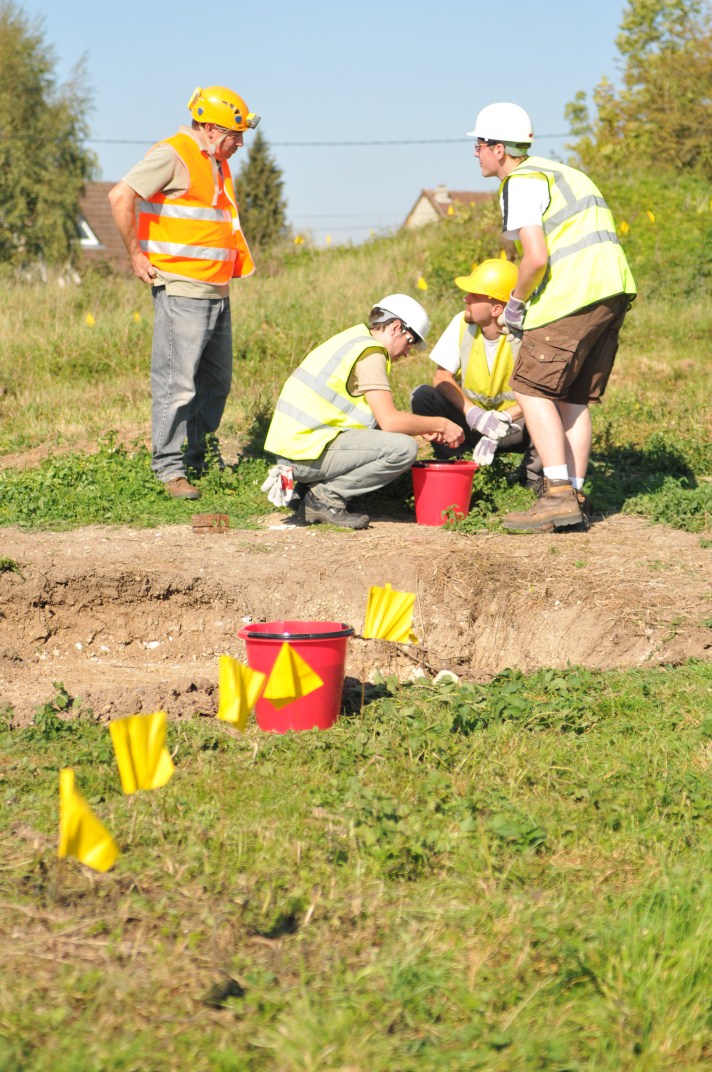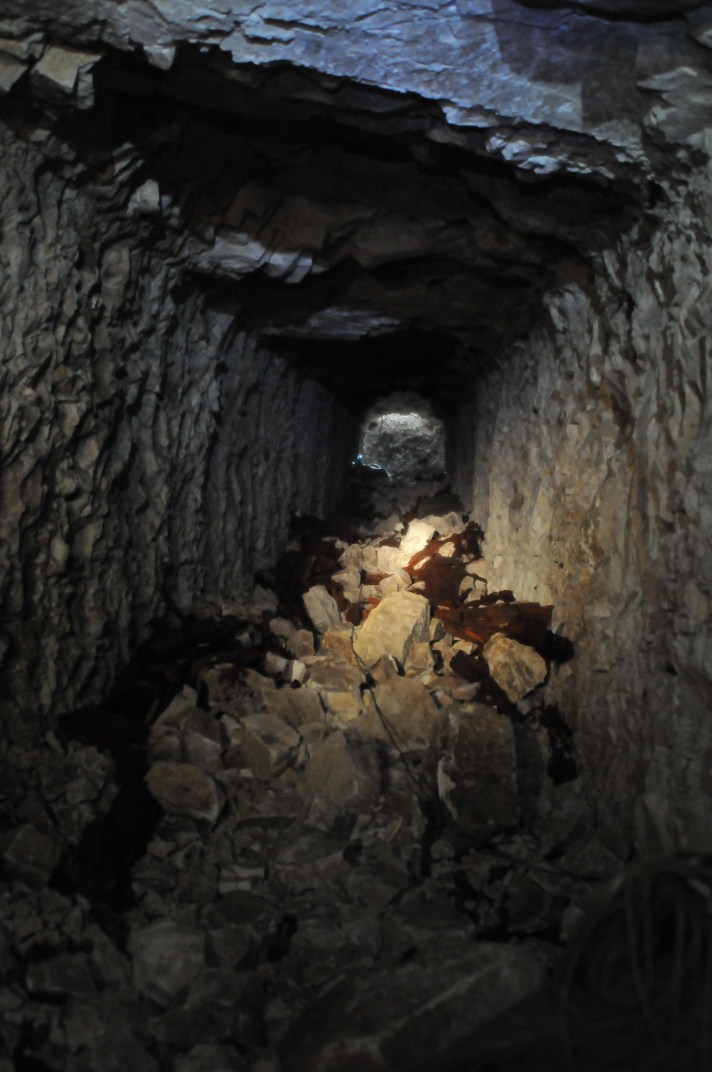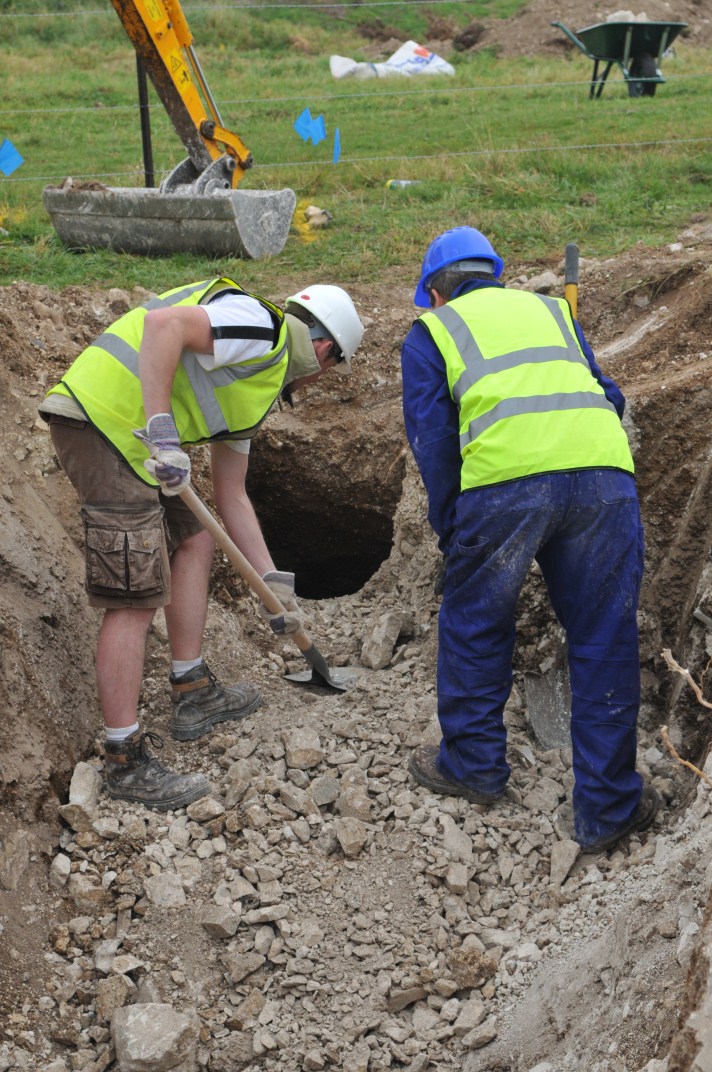Work is well underway on site. Having erected our HQ tent and connected necessary services such as water and electricity the team, comprising LBSG members, French archaeologists, serving soldiers from the Royal Logistics Corps, volunteers and members of GIEOS began a number of tasks for the week. Two small sondages have been started. The first, around the existing collapse of the 1915 X incline covers a 5x5m plot. Topsoil was removed and chalk  uncovered.

The 'top-stripping' process begins for the first sondage around the 1915 X incline collapse. Photograph reproduced courtesy of Terry Blackwood.
Working back from the collapse (which has been acting as our entry and exit point for the tunnel system) the archaeologists are now beginning to gain an understanding of how the incline was associated with Quémart trench. A large amount of infill has been removed from the incline mouth, yielding impressive quantities of artefacts including containers for cheese, jam and pickles as well as a hipflask and tobacco tin. A quantity of French small arms munitions was also retrieved.

French archaeologists inspecting artefacts found in the first sondage at the 1915 X incline. Photograph reproduced courtesy of Terry Blackwood.
A second sondage was begun yesterday to locate and open the 1916 W adit. By the end of the day the entrance had been located and cleared. The adit is much longer and thus has a shallower gradient than the 1915 X incline. Once completed in 1916 it became the main entrance point to that sector of the tunnel system. By having two openings to the tunnel system the flow of air is now regulated.

Peter Barton, Simon Jones & Anthony Byledbal discuss how best to excavate the 1916 W Adit entrance. Photograph reproduced courtesy of Terry Blackwood.
Today will see us clearing spoil from this adit as well as continuing archaeological work on the 1915 X incline and QuĂ©mart trench. It is slow, meticulous work but by utilising this process we are beginning to understand the complex relationship of the trench system. Only one item of unexploded ordnance has been unearthed – a German Lanz trench mortar – which was dealt with immediately and efficiently by the Service DĂ©minage.

Daylight at the top of the 1916 W Adit - the first such light for over ninety years. Photograph reproduced courtesy of Terry Blackwood.
Preparations are well under way for the Open Day at the weekend. Trench lines have been flagged out all the way to Lochnagar Crater. These will be named and the locations of mine shafts clearly marked. We will also be marking the precise locations of men known to be buried on the site. Their details and, in some cases, photographs will be affixed to signs directly above their burial spot. By doing this we endeavour to interpret the site for the expected large number of visitors.





14 Responses to Progress Report on Archaeological Dig: 3-9 October 2011